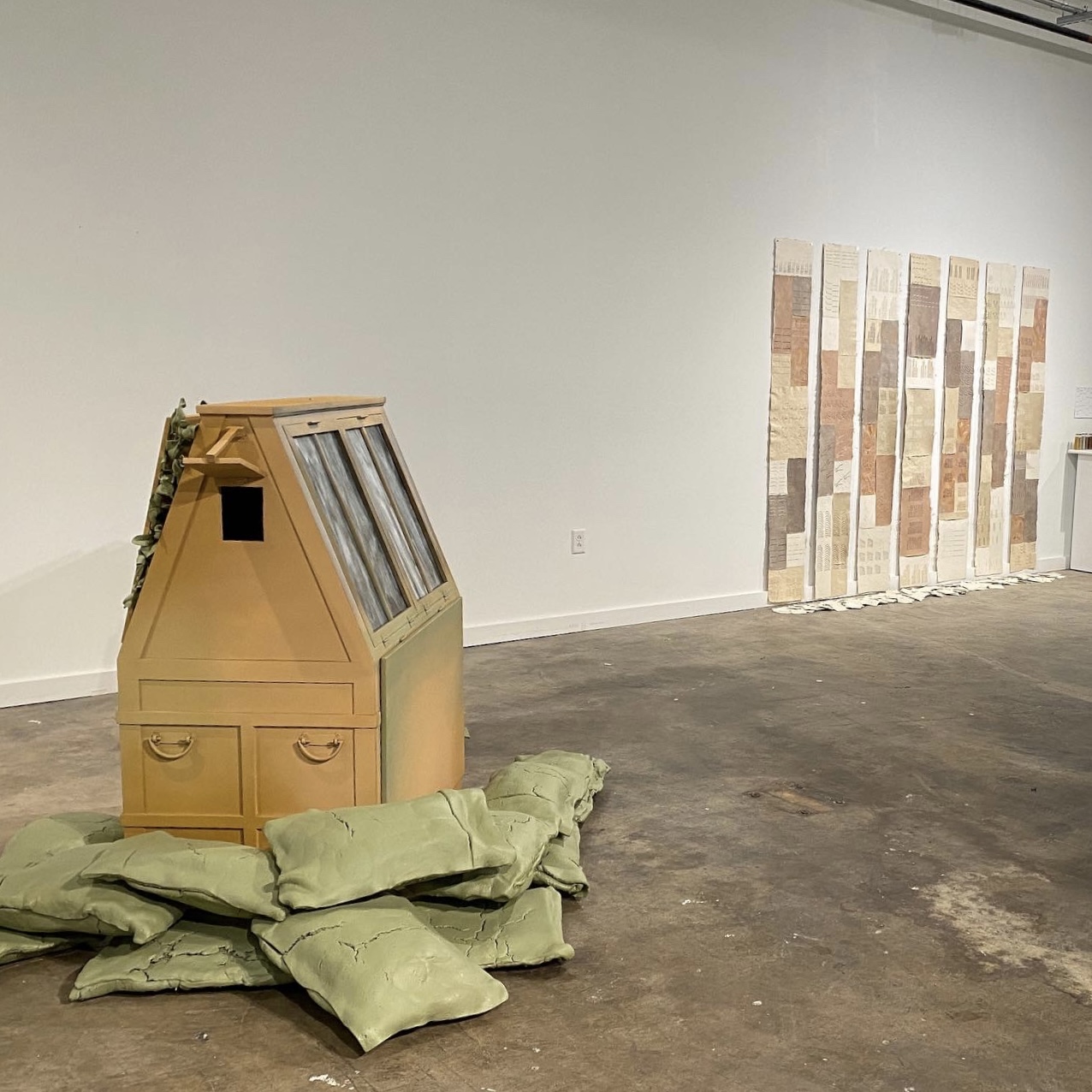TERRITORIAL: The Land and Us
Exhibition Information:
February 10, 2023 - June 10, 2023
Stove Works
Chattanooga, TN
Organized by Haley Clouser
Thumbnail image: LaRissa Rogers, A Poetic of Living. Courtesy the artist.
February 10, 2023 - June 10, 2023
Stove Works
Chattanooga, TN
Organized by Haley Clouser
Thumbnail image: LaRissa Rogers, A Poetic of Living. Courtesy the artist.

TERRITORIAL: The Land and Us investigates the ways in which the Euro-Western philosophy on land, particularly its espousal to control and subjugate land for resources and power, has incurred far-reaching issues still apparent today. From fifteenth century colonialism to Manifest Destiny in the nineteenth century, this territorial ideology has led to diaspora, slavery, and more recently, the climate crisis and its residual injustices. Through sculpture, installation, photography and film, artists in TERRITORIAL trace the detrimental legacies of this outlook on land, illuminating its effects upon humanity and the environment and advocating for new approaches and relationships with the land beneath our feet.
Artists like LaRissa Rogers, Rachelle Dang, and Cara Romero explore the topic of land and diaspora. Rogers’ two installations identify soil’s capacity to house memories of trauma and displacement, as well as moments of regeneration and resiliency. As visitors traverse through A Poetic of Living, an installation made up of soil from sites of Black erasure and celosia seeds (an African plant brought via the Transatlantic Slave Trade), they mirror historical modes of cultural dissemination and confront buried histories, all while the celosia perseveres. Dang’s Uncertain Haven reconstructs an eighteenth century botanical transport carrier used by Euro-American settlers to expropriate rare plant species from Caribbean and Pacific colonies. Her sculpture draws similarities between the deracination and trafficking of both plants and people during imperialist eras. Romero’s photograph Evolvers captures Chemehuevi children running through Coachella Valley near windmills, bringing visibility to the region’s historically displaced Indigenous populations and reclaiming the land back to its Native custodians.
Examining land and labor, Kandis Williams’ film Annexation: A Tango draws connections between colonial-era plantations and modern-day prison farms in Virginia, both of which enforce agricultural labor upon people of color, bare uncanny architectural similarities, and have been sites of Black artistic expression. Gideon Mendel and John Gerrard speak on the effects of the climate crisis and its roots to colonialism and land ownership. Mendel’s Submerged Portraits capture global, disempowered communities experiencing rising sea levels exacerbated by climate change, revealing how colonialist legacies have influenced who is more climate-vulnerable today. Gerrard programs a computer simulation of an undulating, flag-like oil spill in Yemen, visualizing the impact of resource extraction upon the land and sea, while alluding to the oil industries’ fueling of geo-political conflict. Lastly, Amanda Brazier’s abstract paintings made from locally-sourced earth pigments meditate on the intersections of Chattanoogan land, its history, and all those who engage with it. Brazier invites visitors to take the handmade seed paper as keepsakes or for replanting, furthering notions of interconnectivity and reminding us that we are eternally linked to everyone and everything through the land.
Public programming included community workshops led by Amanda Brazier; the screening of Not Our Land by Cannupa Hanska Luger, a film exploring Indigenous land rights; among other community-oriented events.
For more information about the exhibition, featured artworks, and resources, visit this link.